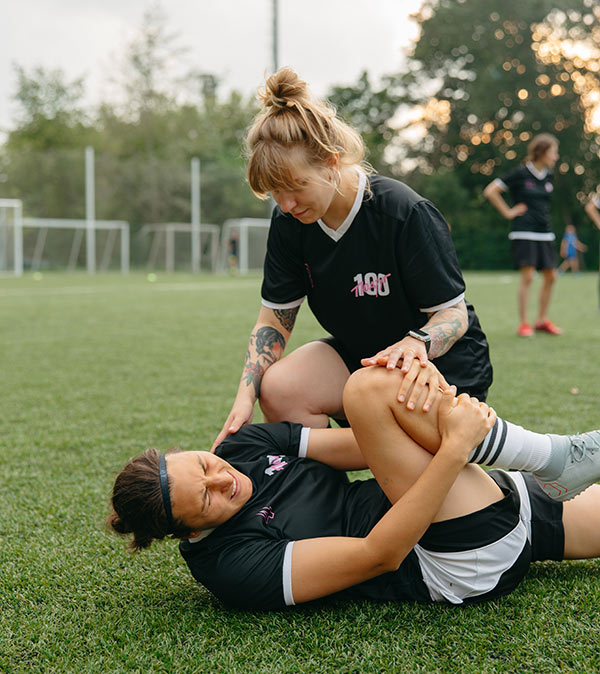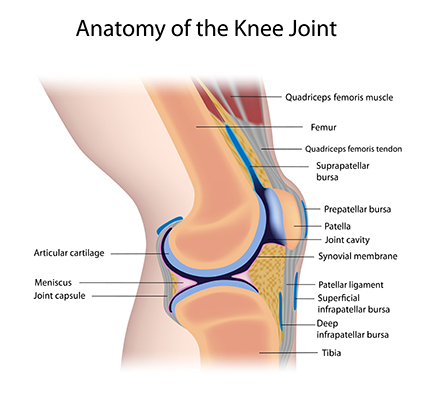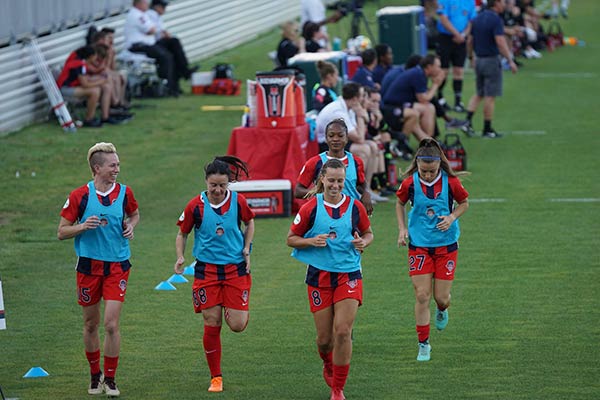4 Steps to Overcoming Knee Injuries for Female Soccer Players
With Female Football Week being celebrated at Capital Football, I thought it was a good time to write about the injury risk factors female soccer players face. There are a number of risk factors for female soccer players where they are predisposed to a greater risk of injury and, in particular, have a greater risk for knee injuries. The rise and rise of soccer in Australia has been extraordinary in the 21st century.
To date, Australian female numbers ranks 5th in the world for both total registered players and youth players. There are a multitude of reasons – funding from Football Federation Australia (FFA), the success of the Matildas (the national team) where they were unlucky to be bundled out at the quarterfinal stage at the 2015 World Cup as well as the growth of the W-League (the female equivalent of the A-League). To emphasise this last point further, Melbourne City has just completed an undefeated season in their inaugural year. Clearly the powerful City Football Group (owners of Manchester City, New York City and Melbourne City soccer teams) see the benefits of women’s soccer by investing heavily in a star-studded squad for 2015-16.
The aim of this to article is to highlight knee injuries and the risk factors associated with female soccer players. I’ll also cover subsequent treatment plans for knee injuries.

There are a lot of similarities as well as differences between male and female soccer players. For a general overview of a previous soccer article I have completed regarding injuries, please see the below link:
4 Easy Steps to Reduce the Risk of Soccer (Football) Injuries
With the increase of numbers of female soccer players, there has also been a large amount of injuries coming into the clinic. Seeking a health professional earlier for appropriate care equates to reduced time spent on the sidelines injured. Being proactive with an injury is the best way to deal with it. I had a youth player recently come into the clinic with bone bruising around the ankle – although not a severe injury, she only missed 2 training sessions and was back playing by the weekend because she sought treatment the week of the incident occurring. Good results all round as the treatment time was minimal and the player didn’t miss any games.
Risk Factors for Knee Injuries
Risk factors for female soccer players where they are predisposed to a greater risk of injury include:
a) Joint laxity – Females generally have a greater joint laxity than males in an adult population. Similar differences have not been seen in preadolescents.
b) Hormones – An insightful study by Schultz et al identifies that female hormones are a primary mediator of the observed sex differences in knee laxity. Increased laxity in females coincides with days of the menstrual cycle when estradiol and progesterone were significantly elevated. Basically increasing the joint laxity in the knee increases the risk of a serious injury.
c) Valgus alignment – Valgus refers to the inward angulation at the end of a bone or joint. Specifically for female soccer players in relation to the hip, ‘wide hips and knock knees’ is a common presentation. The knee is therefore at a mechanical disadvantage and places the knee into a vulnerable position. Women are also (usually) weaker in the gluteal and hamstring muscles. These are important to stabilise the hip and knee as well as provide support to the lumbar spine.
d) Ligament size – The Anterior Cruciate Ligament provides stability to the knee. It runs between the a notch in the femur (thigh bone) and tibia (shin bone). It prevents the tibia from moving too far forward and from rotating too far outward under the femur. Females have a narrower notch compared to males. As a result, the space for the ACL to move is decreased in females. Furthermore, this restricted space between the two bones can easily pinch the ACL which can subsequently lead to a tear or rupture.
e) Muscle activation and control – The glute medius muscle is put in a position of greater disadvantage in females due to wider pelvic position. Furthermore, women can very quadriceps dominant with jumping, landing and hopping. This can place further stress on the ligaments of the knee. Complicating the matter, there is an old saying that females have to learn to run twice: once before puberty and once after (or during).Theoretically, women have to re-learn muscle control and activation after going through a growth period that changes the knee and hip angles and consequently their lower limb biomechanics.
What can be done? A treatment plan for Knee Injuries
- A comprehensive biomechanical assessment with your physiotherapist is a great preventative tool to elicit any problematic and/or weak areas of the body. This usually involves a detailed analysis of movements such as running, jumping, squatting and landing.
- A complete stretching program is a great preventative tool to decrease the risk of injury. By identifying what areas need to be improved upon, our physiotherapists can prescribe specific areas to stretched or strengthened.
- A foam roller is also a very usual item in terms of loosening up certain muscles. For a comprehensive analysis of foam rollers, Simon has written a superb article on how to get the most out of it
- The ‘Prevent injury and Enhance Performance’ program is a neuromuscular and proprioceptive training program that has been proven to reduce the number of ACL injuries (non-contact) in female soccer players. The program is to be performed 3 times a week for 20 minutes. It primarily consists of warm up, stretching, strengthening, plyometrics and sport specific agility.
[bctt tweet=”A comprehensive biomechanical assessment with your physiotherapist is a great preventative tool.”]
Applying these simple changes and really focusing on preventative healthcare will reduce the rate and incidence of knee injuries in female soccer players. It is widely considered that a knee reconstruction is one of the worst lower limb injuries you can go through. It is a long injury lay off with a prolonged rehabilitation sequence. This article explores why knee injuries are on the rise in female soccer players as well as a practical and easy to use guide in how to decrease the risks. As always, if you feel that your knee is giving you problems, then come in and see our physiotherapy team to keep you going in the 2016 season.
March is also return to football month where at Sport and Spinal Physiotherapy, you can get a FREE football shoe check with our Podiatrist Cecilia. This is for males and females. Take advantage of this offer as it will save you money towards the back end of the season as incorrect footwear is a predisposing risk factor for soft tissue injuries in soccer (as well as other sports).
References:
Sex differences in knee joint laxity change across the female menstrual cycle
Sex Differences in Valgus Knee Angle During a Single-Leg Drop Jump
The shape and the thickness of the anterior cruciate ligament along its length in relation to the posterior cruciate ligament: a cadaveric study.



Thank you so much for healing my daughter’s knee disorder. She’s not only pain free and back to playing soccer, but she’s come out of this with some skills to prevent further injury into adulthood. And to boot, she’s developed a passion for physiotherapy now that she’s seen what a good physiotherapist can do! You may have yourself a future staff member 🙂